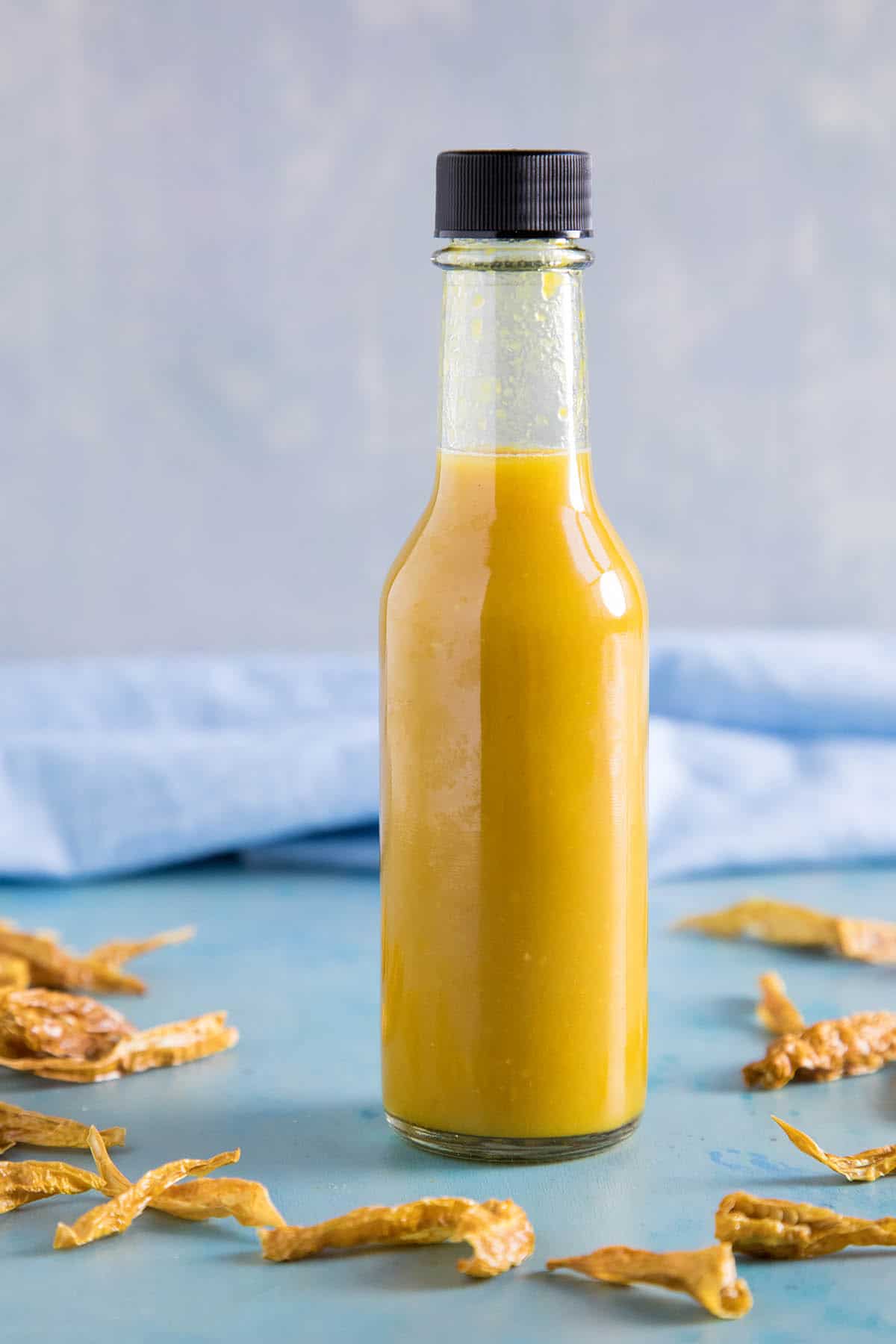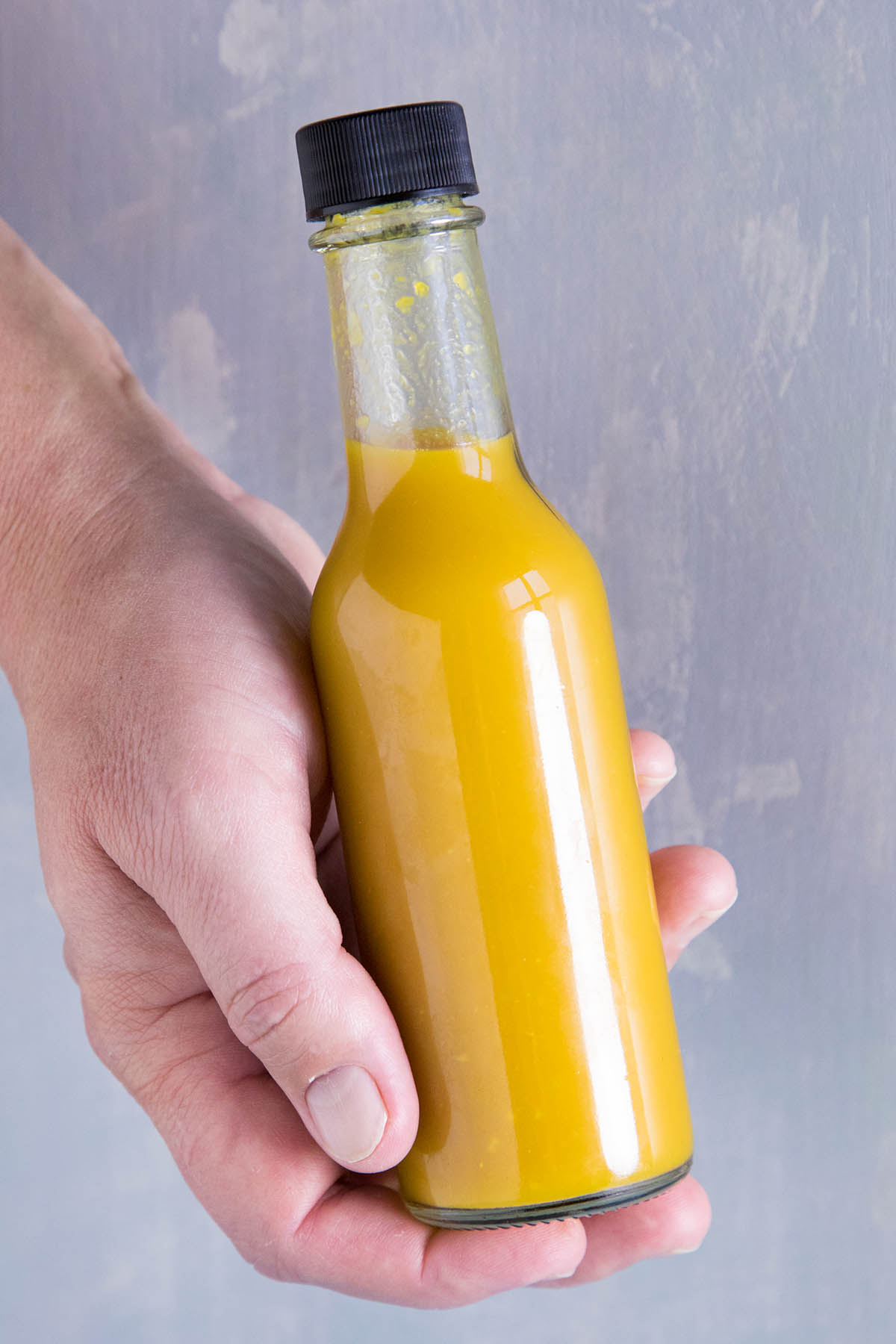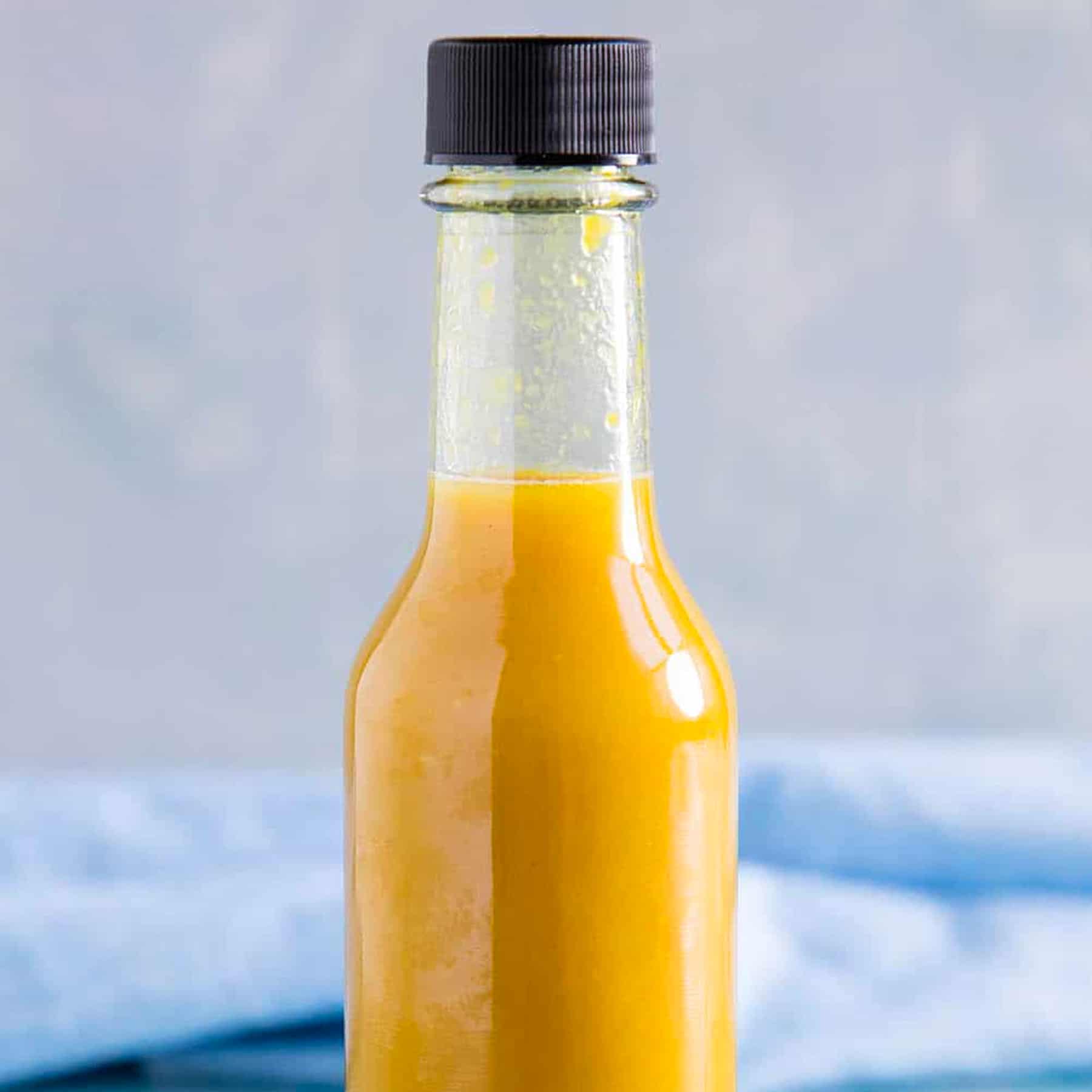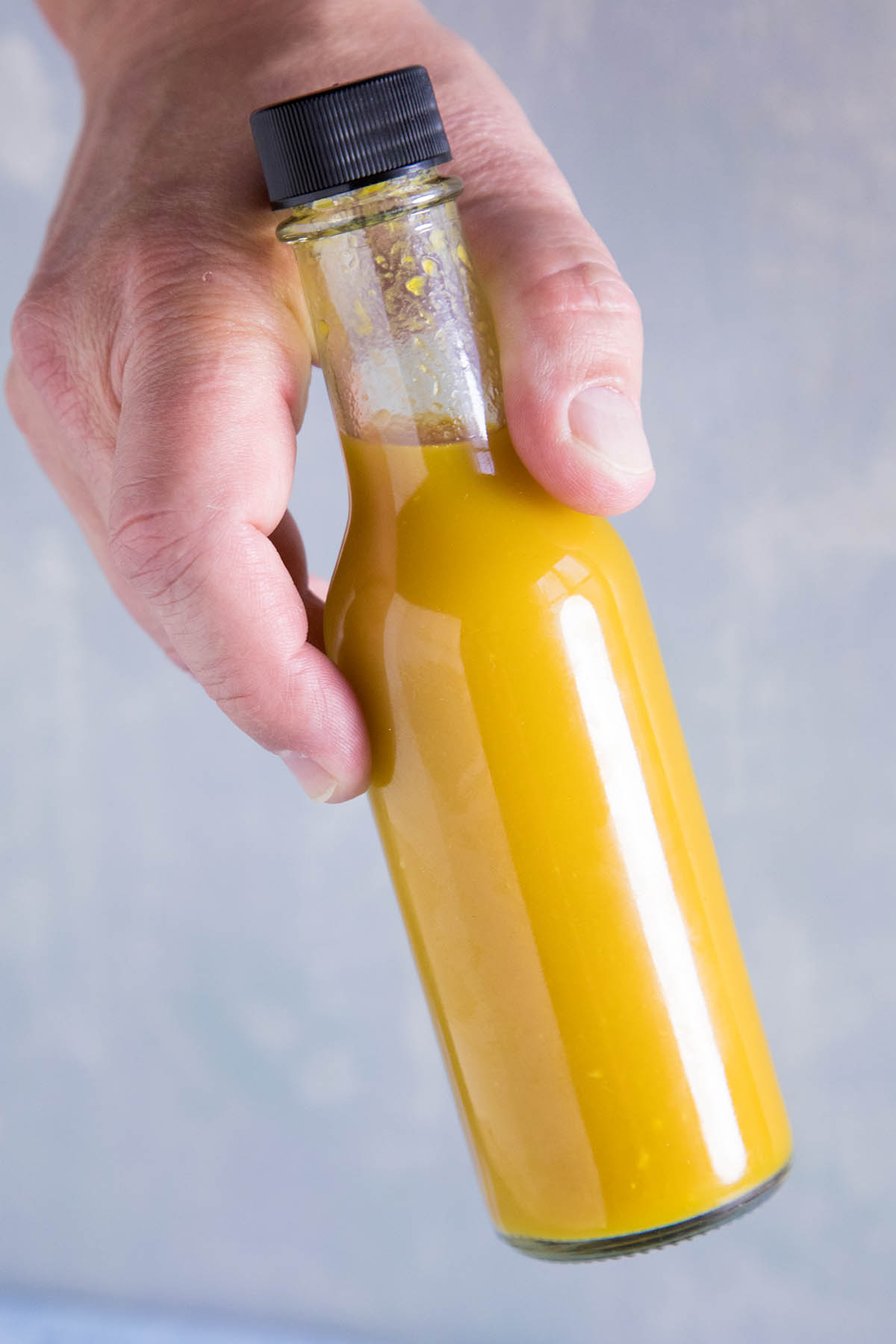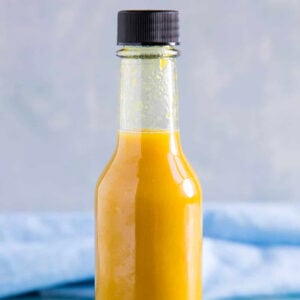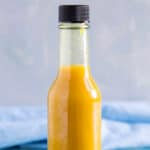Got any questions? Ask away! I’m happy to help. If you enjoy this recipe, I hope you’ll leave a comment with some STARS. Also, please share it on social media. Don’t forget to tag us at #ChiliPepperMadness. I’ll be sure to share! Thanks! — Mike H. It’s one of the reasons I typically grow at least one aji variety each year, because of the large yield. You’ll find a good range of them as well, from sweets to hots, with flavor differences in between, so you’re free to grow to your own taste preferences. The thing is, since they are SO productive, what can you do with all of those peppers? You can cook them into meals, of course, freeze them, dry them to make homemade chili flakes and powders, but don’t forget one important way to keep them… HOMEMADE HOT SAUCE! YES! I used the brine method, which is my preferred fermenting method with chili peppers. Basically, I processed the peppers, added them to a jar, and poured a salt solution over them to cover. Leave a good inch of head space. The brine is made by mixing 3 tablespoons of sea salt with 1 quart of unchlorinated water, which creates the ideal environment for good bacteria to do its work. The process of fermentation basically breaks down the peppers, mellowing them out a bit, developing flavor. You can typically see that activity in the form of bubbles in the brine, though sometimes you’ll have a quiet fermentation and won’t see the bubbles. As the process slows, activity tends to stop after a week or 2, though you can continue fermenting. In this case, I left mine in the pantry for 6 weeks before moving onward. This is a great one for that. Just cook the fermented peppers, including the brine, with lime juice, fresh garlic and vinegar, then process it in a food processor. I strain mine afterward to give it a consistency more like Tabasco sauce, though you can keep it more chunky and solid if you’d like. If you DO strain it, try dehydrating those solids for a bit of homemade seasoning powder. There is plenty of life left in that pulp! See How to Make Seasonings from Strained Hot Sauce Pulp. Let me know how it turns out for you! Happy hot sauce making! You can ferment for a week or 2 to let the good bacteria do their work, but you can easily go longer. I often go about 8 weeks for mine. If you’re new to fermenting, I have some information you can refer to. See: How to Ferment Chili Peppers (How to Make Fermented Pepper Mash). A few notes on making hot sauce. Fermented peppers offer up a milder flavor for your hot sauce blends, so the resulting hot sauce is typically more complex and nuanced than many other hot sauces. The choice is yours. To be technical, target level ph for shelf stable foods is below 4.6 ph, but should probably be lower for home cooks, around 4.0 or so, to account for errors. If you’re concerned, add more vinegar to lower the ph. Sauces made with fermented chili peppers will last even longer.
